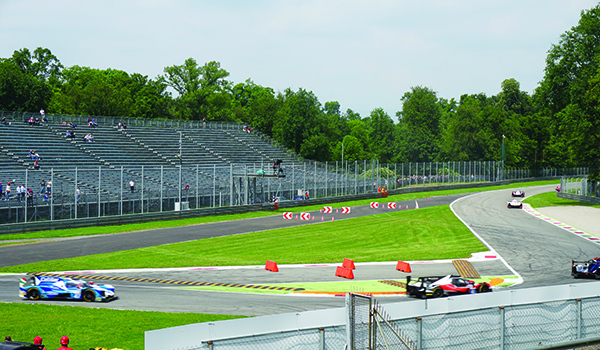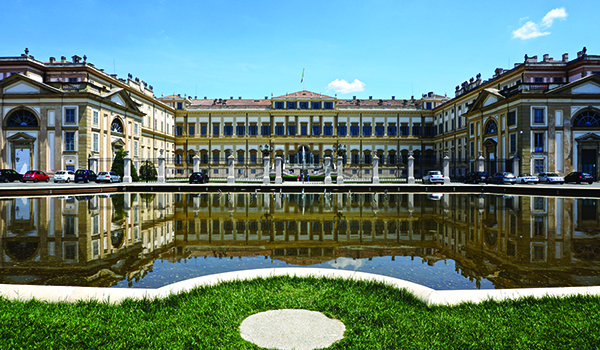The name of Monza is known to motor racing enthusiasts around the world, but Rachael Martin finds that there is more to the city than its famous race track…
Mention the word Monza and most people immediately think of the city’s motor racing track. And, of course, they wouldn’t be wrong. Designed by architect Alfredo Rosselli and engineer Piero Puricelli and built in 1922 – when the only other purpose-built motor racing tracks in the world were at Brooklands, near Weybridge, and Indianapolis – the Autodromo Nazionale Monza was subject to major re-building between 1938 and 1939, and is today recognised as being the fastest racetrack in Europe.
Monza hosts the Italian Grand Prix every September – and has done every year, with the exception of 1980, since the series’ inception in 1950 – and its Grand Prix track has names that are pure motorsports poetry. Ascari, Curva di Lesmo, Prima Variante and Parabolica are all curves and chicanes on an otherwise mostly straight track that ensure that spectators see an exciting race every time.
The people of Monza love their racetrack. As Niccolò Piazza, who was born and grew up in Monza, explains, “The best thing about the racetrack is that it’s in the woods. The nature all around it balances out the concrete mass that is the autodromo and creates a lovely atmosphere. Since childhood, I’ve been going to the racetrack whether there’s a race on or not, just to take in the experience of being there at the track.”

For me, it’s the sound of engines coming towards you on race days, whether it be Formula One racing cars, old school Fiestas that take you back to your youth, or racing green Minis one weekend under appropriately cloudy UK-style skies. I’ve been taking my boys there since they could barely walk. Motors are pretty much obligatory in our family, especially when granddad’s still flying round on superbikes in his seventies.
The park and royal villa
Monza Park is the largest walled urban park in Europe. As well as motor sports, it hosts other events including the Italian Open (golf) and open-air concerts. Headliners included Green Day, Radiohead and Justin Bieber at the IDays festival in June this year, and in March, Pope Francis held a Mass for which a million people turned up.
It’s also home to the neo-classical, U-shaped Royal Villa of Monza, which was built on the orders of Maria Theresa, Empress of Austria, as a summer residence for her son, the Archduke Ferdinand, and his wife, Maria Beatrice d’Este.
Designed by the architect Giuseppe Piermarini – who also designed the Teatro alla Scala in Milan – and built between 1777 and 1780, it was used by the couple until the Napoleonic invasion of 1796. When Napoleon was crowned emperor at the end of December 1804, it became the home of Eugène de Beauharnais, Napoleon’s stepson and Viceroy of Italy. It was he who commissioned the design of the park by Luigi Canonica, a pupil of Piermarini, and the work that took place from 1806 onwards, including the various farmhouses, windmills and irrigation system, that define the park as we know it today.

Queen Margherita of Savoy was another important figure in the life of the villa. She was not yet eighteen when she married her cousin, Umberto of Savoy (later Umberto I of Italy), and filled the court with culture and arts. When Umberto was assassinated in Monza in July 1900, his heir, Vittorio Emanuele III, no longer wished to use the Royal Villa and it was abandoned; in 1934 the king officially gave it to the council of Milan and Monza.
In 2003, work began on a huge restoration project of the villa that not only restored its physical appearance, including the richly decorated royal apartments, but also created a new hub for arts and culture in the area when it re-opened in September 2014. It has a permanent exhibition of pieces from the Triennale Museum of Milan and holds regular temporary exhibitions. Recent ones have included Steve McCurry, Italian Alta Moda (high fashion), photographer Henri Cartier-Bresson and From Monet to Bacon, Masterpieces from the Johannesburg Art Gallery.
Theodelinda, the Lombard queen
The city has its foundations in Roman times as the city of Modicia, and was later claimed by the Ostrogoth king Theodoric, who built a palace here. Then along came Theodelinda, wife of Agilulf, a duke of Turin and king of the Lombards from 591 until he died in 616. She was Catholic, in contrast to the majority of Lombards, who were Arian Christians, and it was she who ordered the construction, from 595 onwards, of a church dedicated to St John the Baptist.
The story of her life is told in the cycle of 45 frescoes of the Zavattari Chapel, named after the family of artists recorded to be working from their workshop in Milan between the end of the 14th century and the beginning of the 16th century. The painstakingly restored frescoes and are considered a Gothic masterpiece.
The chapel holds various other treasures, the most important being the Iron Crown of Lombardy, made from gold plates and gems, and reputed to contain part of a nail used in the Crucifixion that was added by Saint Helen for her son, the Emperor Constantine. It was used to crown Italian kings up until the end of the 19th century. Other treasures include the Cross of Theodelinda (also known as the Cross of Adaolaldo or Saint Gregory the Great) and ampoules dating back to between the 6th and 7th centuries that contained Holy Oil brought back from pilgrimages to the Holy Land.
